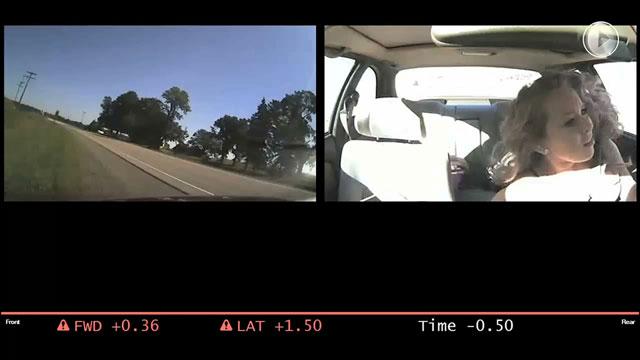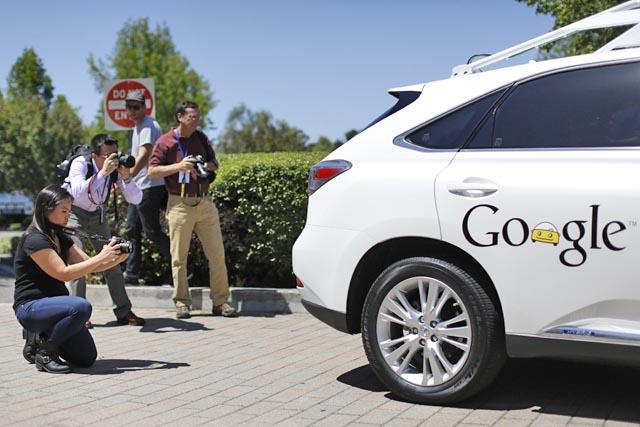You are here
Phones, friends are distracting problem for teen drivers
By AP - Mar 25,2015 - Last updated at Mar 25,2015

WASHINGTON — Distractions — especially talking with passengers and using cellphones — play a far greater role in car crashes involving teen drivers than has been previously understood, according to compelling new evidence cited by safety researchers.
The AAA Foundation for Traffic Safety analysed nearly 1,700 videos that capture the actions of teen drivers in the moments before a crash. It found that distractions were a factor in nearly 6 of 10 moderate to severe crashes. That's four times the rate in many previous official estimates that were based on police reports.
The study is unusual because researchers rarely have access to crash videos that clearly show what drivers were doing in the seconds before impact as well as what was happening on the road. AAA was able to examine more than 6,842 videos from cameras mounted in vehicles, showing both the driver and the simultaneous view out the windshield.
The foundation got the videos from Lytx Inc., which offers programmes that use video to coach drivers in improving their behaviour and reducing collisions. Crashes or hard-braking events were captured in 1,691 of the videos.
They show driver distraction was a factor in 58 per cent of crashes, especially accidents in which vehicles ran off the road or had rear-end collisions. The most common forms of distraction were talking or otherwise engaging with passengers and using a cellphone, including talking, texting and reviewing messages.
Other forms of distraction observed in the videos included drivers looking away from the road at something inside the vehicle, 10 per cent; looking at something outside the vehicle other than the road ahead, 9 per cent; singing or moving to music, 8 per cent; grooming, 6 per cent; and reaching for an object, 6 per cent.
In one video released by AAA, a teenage boy is seen trying to navigate a turn on a rain-slicked road with one hand on the wheel and a cellphone held to his ear in the other hand. The car crosses a lane of traffic and runs off the road, stopping just short of railroad tracks that run parallel to the road.
One teen driver is captured braking hard at the last moment to avoid slamming into the back of an SUV stopped or slowed in traffic ahead. Just a moment before, the girl had turned her attention to another girl in the front passenger seat in an animated conversation. The camera shows the shock on the girls' faces as they suddenly realize a crash is imminent.
The National Highway Traffic Safety Administration has previously estimated that distraction of all kinds is a factor in only 14 per cent of all teen driver crashes.
The videos provide "indisputable evidence that teen drivers are distracted in a much greater per centage of crashes than we previously realised," said Peter Kissinger, the foundation's president and CEO.
Teen drivers using cellphones had their eyes off the road for an average of 4.1 seconds out of the final 6 seconds leading up to a crash, the AAA study found. Researchers also measured reaction times in rear-end crashes and found that teen drivers using cellphones failed to react more than half of the time before the impact, meaning they crashed without braking or steering away.
AAA and other traffic safety groups who previewed the findings said the study shows states should review their licensing requirements to restrict the number of passengers in cars driven by teens and change their laws to prohibit cellphone use by teen drivers.
"The findings of the AAA Report confirm what safety groups have suspected for a long time — distraction is more severe and more common in teen driver crashes than previously found in government data," said Jackie Gillan, president of Advocates for Highway and Auto Safety.
Teen drivers have the highest crash rate of any age group. About 963,000 drivers age 16 to 19 were involved in police-reported crashes in the US in 2013, the most recent year for available data. These crashes resulted in 383,000 injuries and 2,865 deaths.
Related Articles
WASHINGTON — Red-light cameras are widely hated, but a new study says getting rid of them can have fatal consequences.Traffic deaths from re
DETROIT — From his laboratory at Pittsburgh’s Carnegie Mellon University, automated vehicle pioneer Raj Rajkumar says self-driving cars will
A white Lexus cruised along a road near the Google campus, braking for pedestrians and scooting over in its lane to give bicyclists ample space.


















